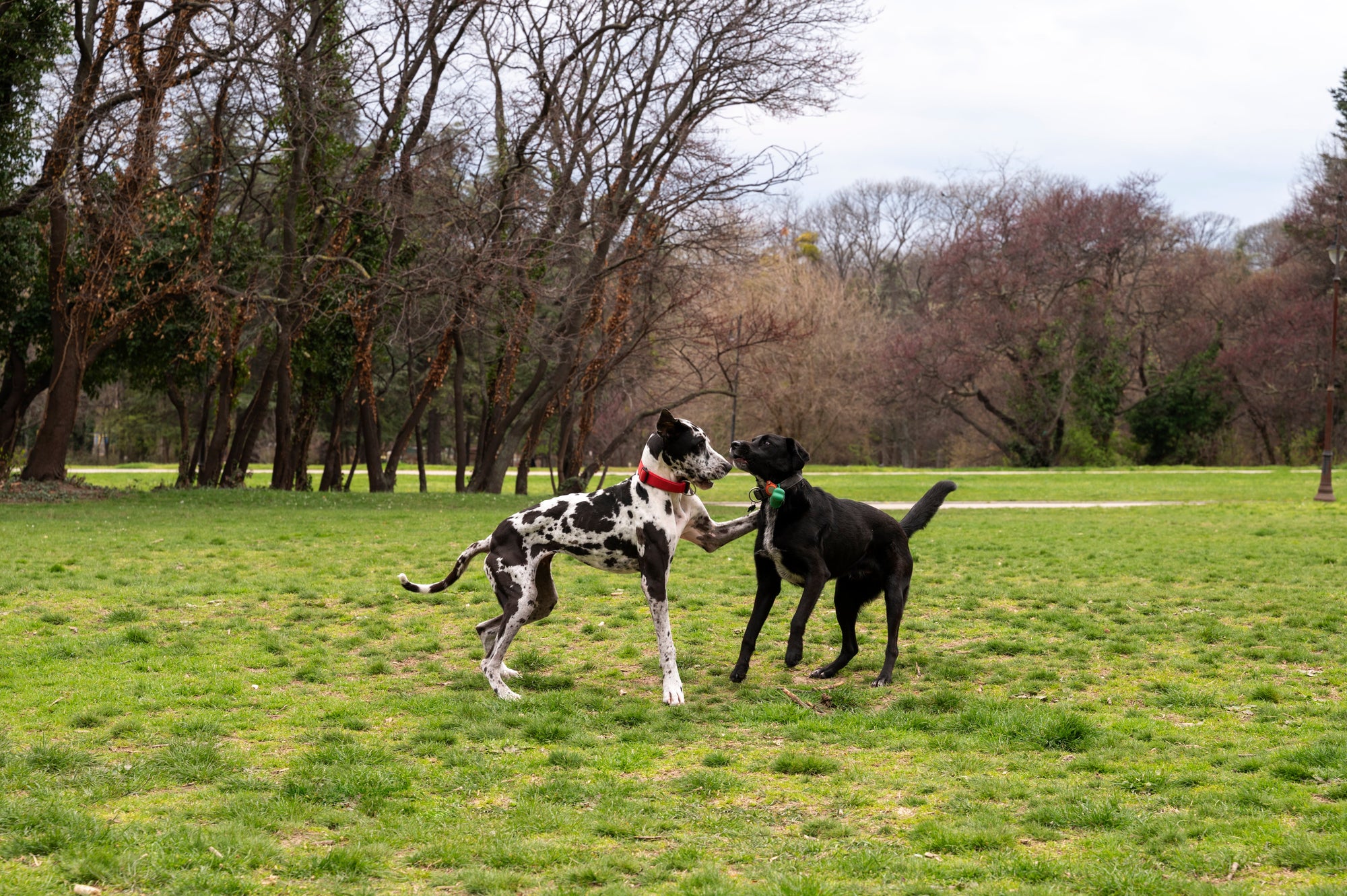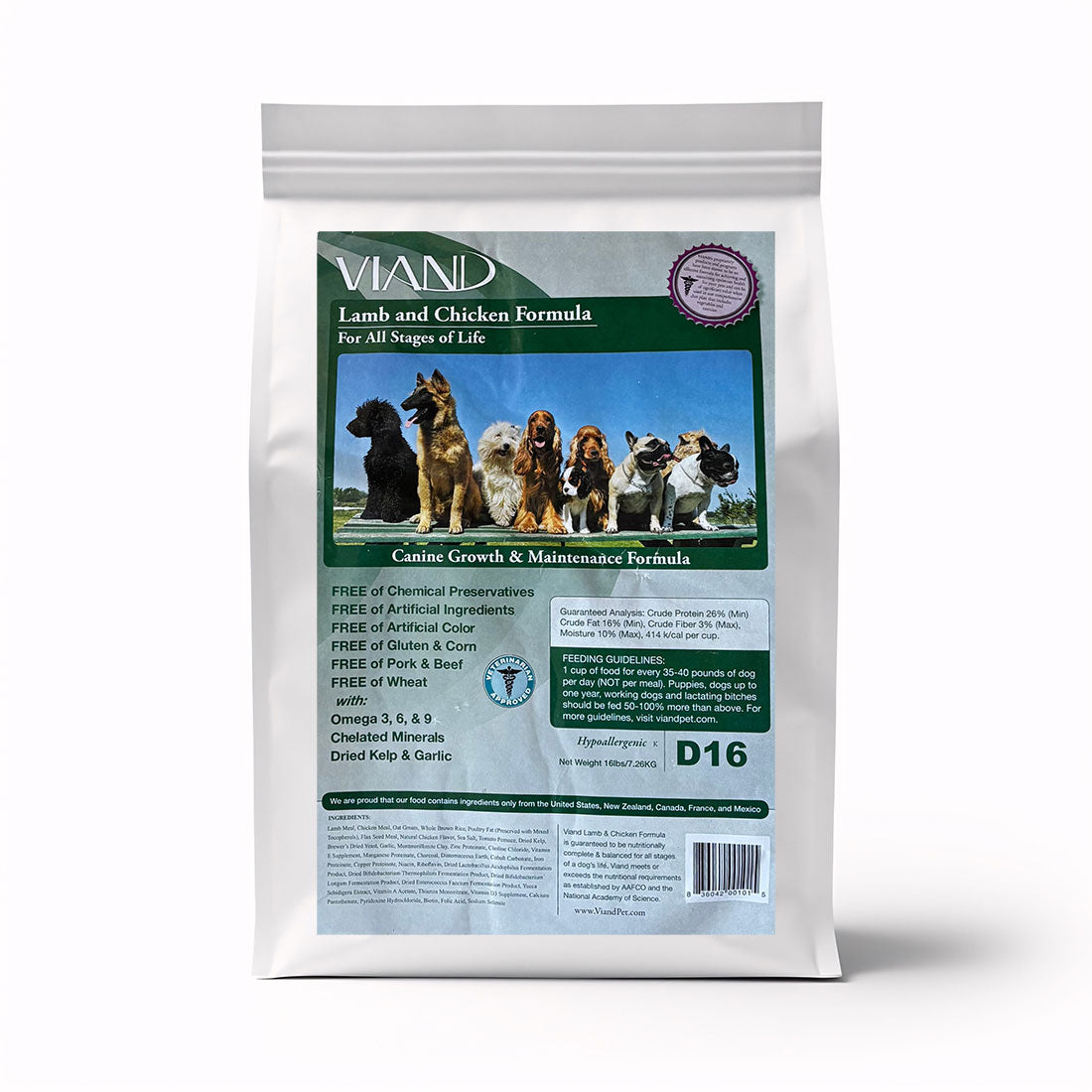

· By Scott Pollak
How to Prevent Dog Fights: A Guide for Proactive Pet Parents
For pet parents, few things are more distressing than witnessing dogs fight. Beyond the physical risk, it can be traumatic for everyone involved—including you. While dog-on-dog aggression can happen for a variety of reasons, most fights are preventable with awareness, preparation, and the right approach to socialization.
In this post, we’ll explore how to prevent dog fights, how to read the warning signs, and what to do if a fight breaks out. At Viand, we believe that knowledge is part of nurturing whole-body wellness for your pet.

Why Do Dogs Fight?
Even well-loved, well-fed dogs can clash. Here are the most common triggers:
-
Resource Guarding: Food, toys, people, or territory
-
Fear or Anxiety: Often due to poor early socialization or a negative past experience
-
Territorial Behavior: Especially in unfamiliar settings or new pack dynamics
-
Social Incompatibility: Some dogs simply don’t get along
-
Predatory Instincts: More common in interactions between large and small dogs
Understanding the cause helps you prevent future problems and manage them better when they arise.
Warning Signs of Trouble
Most fights don’t start out of the blue. Dogs usually show signs of stress or conflict before it escalates:
-
Stiff posture
-
Raised hackles
-
Direct eye contact or staring
-
Freezing or sudden stillness
-
Growling, baring teeth
-
Escalating arousal during rough play
By learning your dog’s body language, you can step in before things go too far.
Is It Play or the Start of a Fight?
Dogs often engage in what looks like roughhousing. Play fighting can include growling, biting, and wrestling—but it’s mutual, relaxed, and often punctuated by a "play bow" (front legs down, rear up). Dogs also take turns.
When the play is one-sided, overly intense, or includes stiff movements and no breaks, it may be a sign things are tipping toward aggression.
How to Prevent Fights Before They Start
-
Prioritize Socialization: From a young age, expose your dog to different breeds, sizes, and energy levels in positive, controlled settings.
-
Supervise Interactions: Especially when toys, treats, or food are present.
-
Provide Adequate Resources: Separate feeding areas, toys, and rest spaces help minimize competition.
-
Avoid Known Triggers: If your dog has a history of anxiety around certain dogs or environments, manage exposure.
-
Use Positive Reinforcement: Reward calm, friendly behavior when your dog interacts well with others.
-
Spay/Neuter: This may reduce hormonally-driven aggression in some dogs.
-
Manage the Environment: Use fences, gates, and leashes to control the space.
If a Fight Breaks Out: What To Do
Stay calm. Your safety comes first.
-
Use loud noise (clap, shout, bang a pot) to distract them
-
Spray with water or use an airhorn if available
-
Place a barrier (blanket, plywood, cardboard) between them
-
If safe, pull them apart using the "wheelbarrow method": grab their hind legs and walk backwards
Never grab collars or place your hands near their mouths.
After the Fight
-
Separate the Dogs: Keep them apart to cool down.
-
Visit the Vet: Even minor bites can become serious without treatment.
-
Identify Triggers: Was it a toy? A new dog? A loud sound?
-
Seek Professional Help: A certified behaviorist can assess and create a reintroduction plan.
-
Reintroduce Gradually: Use positive reinforcement and muzzles if needed to ensure safety.
For Dogs Who Live Together: Long-Term Tips
-
Feed separately and eliminate competition for attention
-
Avoid high-value items unless closely supervised
-
Use muzzles when reintroducing if needed
-
Keep training sessions short, positive, and consistent
-
Regular vet checkups help rule out pain-related aggression
Rebuilding trust takes time, but with patience and the right guidance, most dogs can coexist peacefully again.
Final Thought
Dog fights can be serious, but they don’t have to define your pet’s future. By becoming more aware of canine behavior and being proactive, you can reduce the risk and help your dog feel safer and more confident.
At Viand, we believe behavior is deeply connected to well-being—from the food in their bowl to the trust in their environment.
Have a question about your dog’s behavior? Reach out. We’re always here to help.


